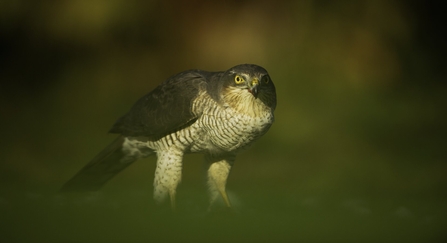
In flight, they show short, broad and fairly blunt-tipped wings and a long, square-ended tail – longer than the width of the wing. They usually fly with a flap-flap-glide motion, with a few rapid wingbeats followed by a short glide. Sparrowhawks hunt smaller birds with surprise attacks, often flying fast and low through bushes and around buildings to catch their prey unawares. As well as gardens, they can be seen in parks, forests and other areas with some tree cover.
Sparrowhawks are often confused with goshawks, which are larger and much rarer. The size difference isn’t always obvious on lone birds, but goshawks have much thicker legs, bulkier bodies and in flight show slower wingbeats, a rounded tail and more protruding head. It’s extremely unlikely for a goshawk to turn up in a garden; most views are distant birds over large areas of woodland, which can be hard to identify without experience.

ConversionConversion EmoticonEmoticon